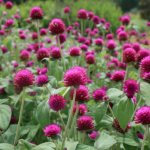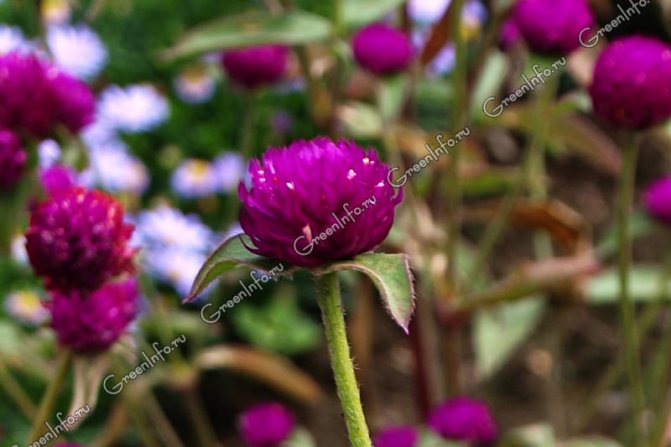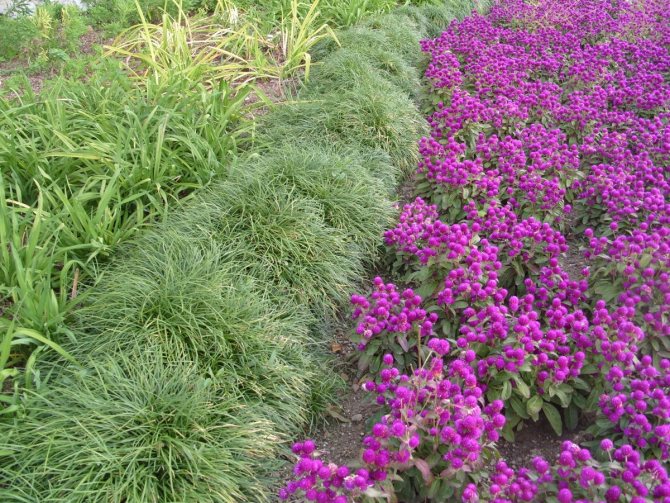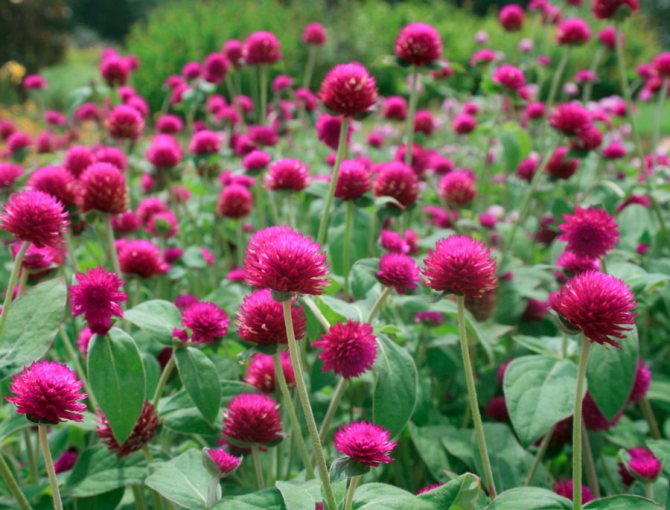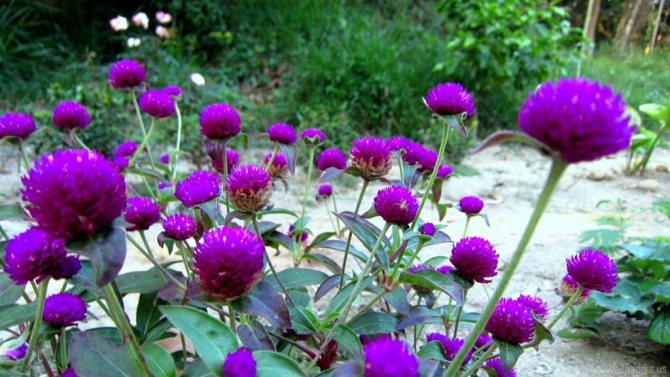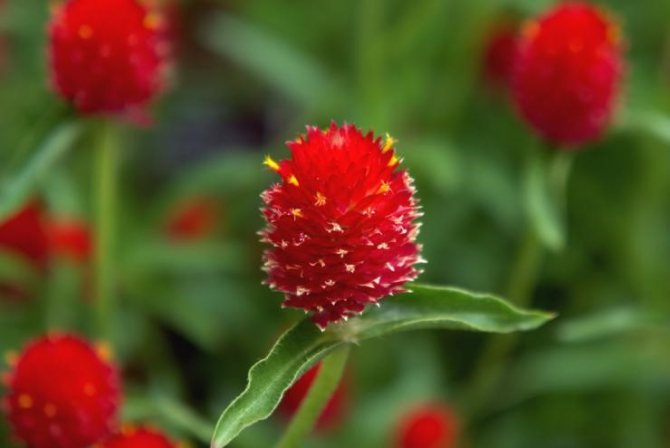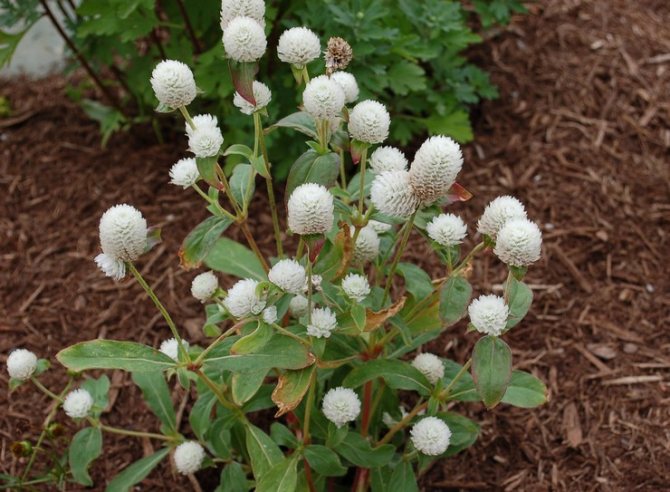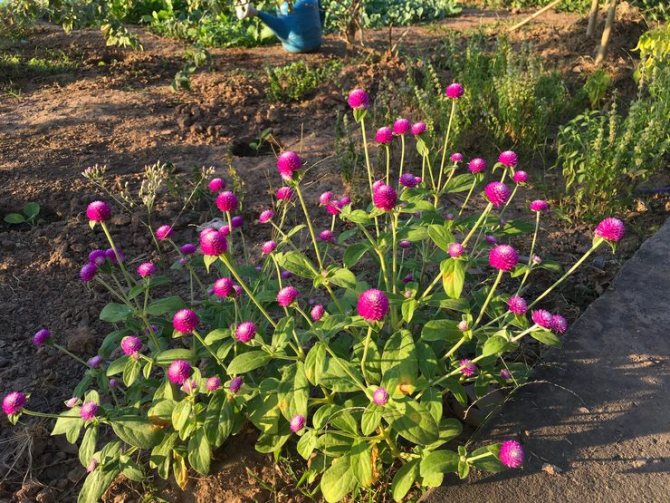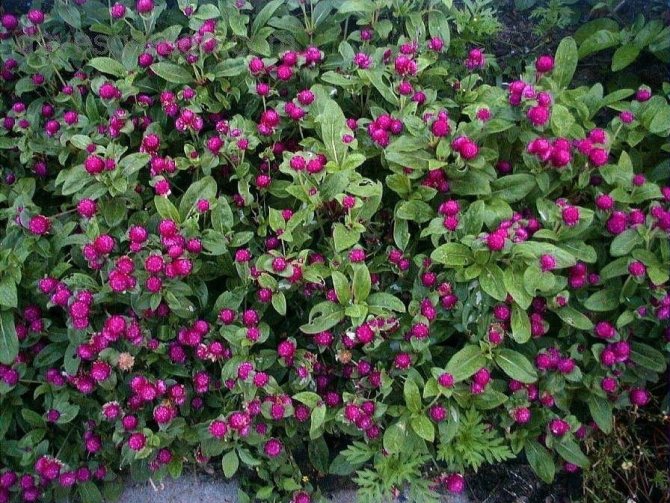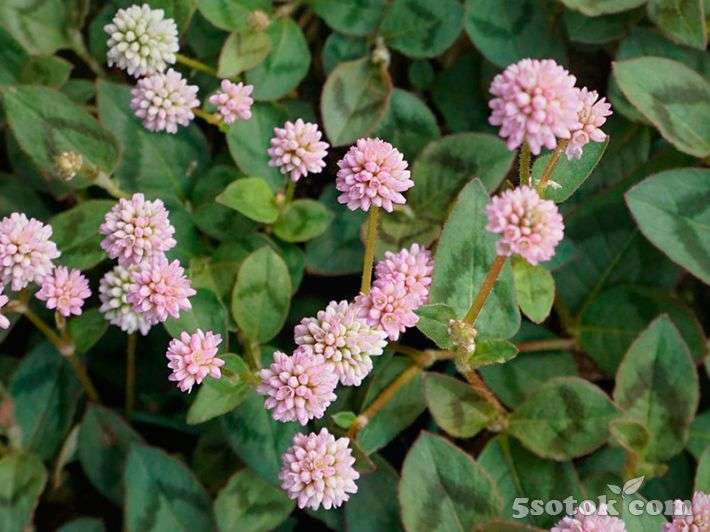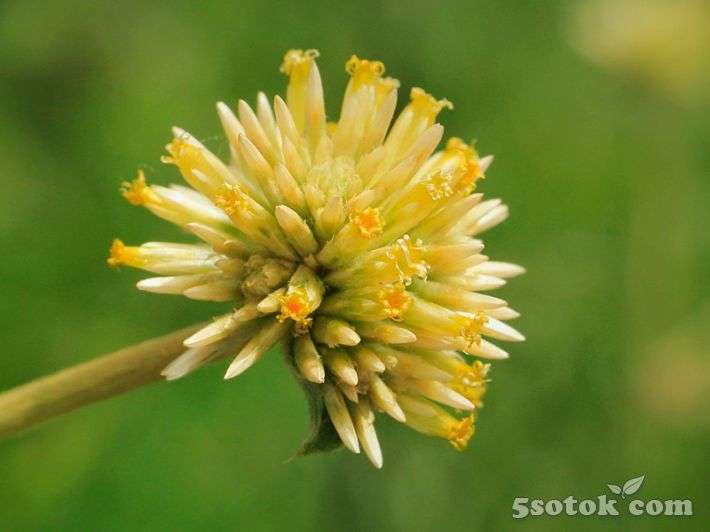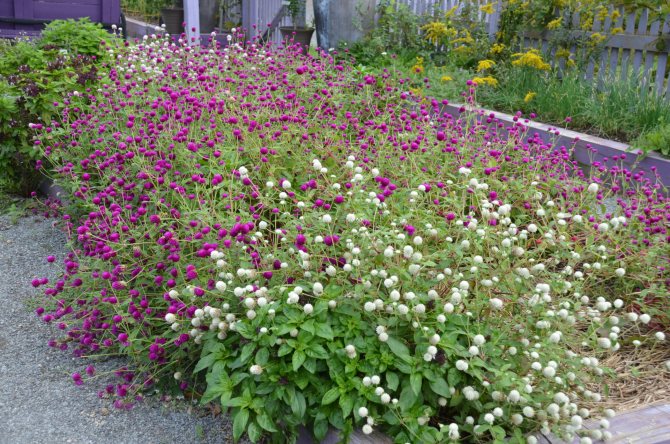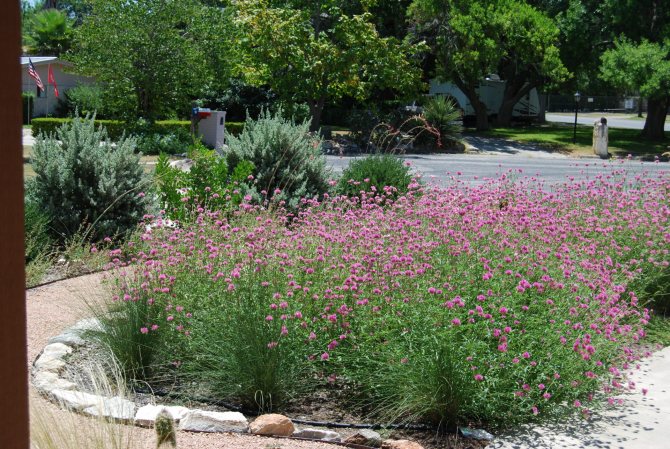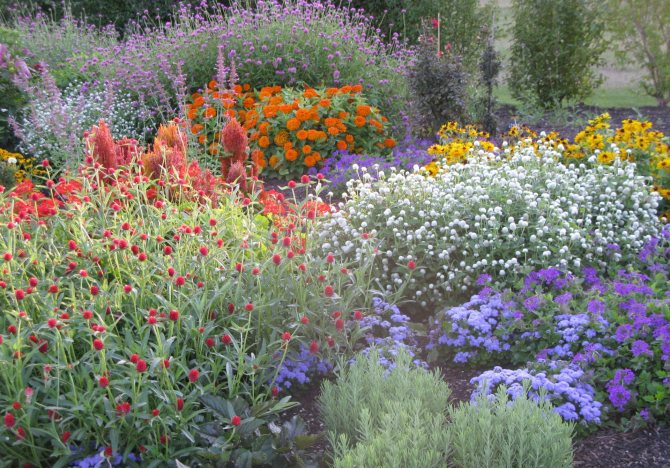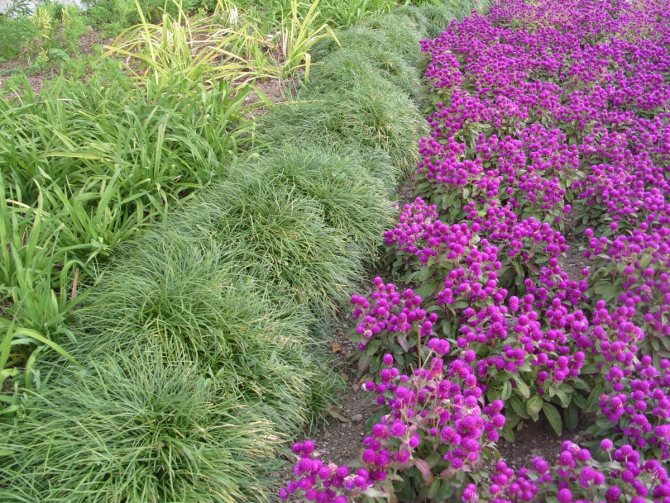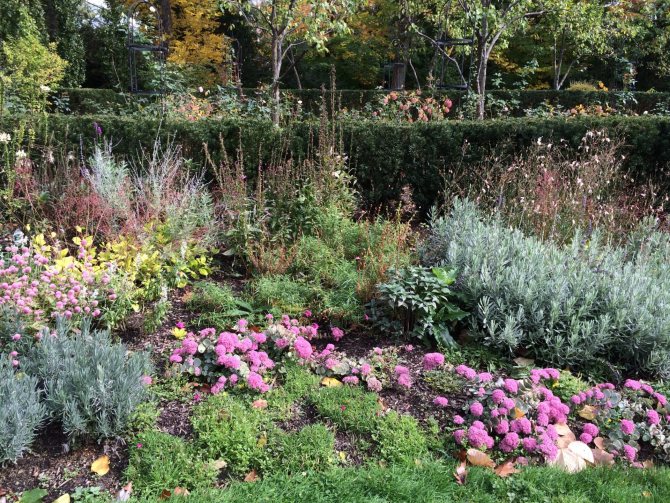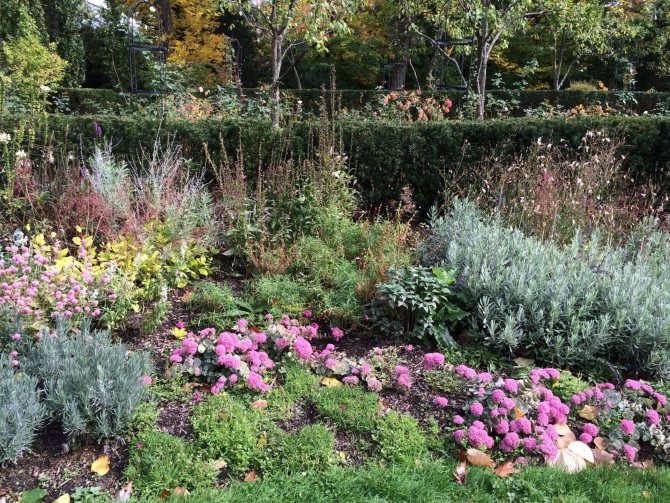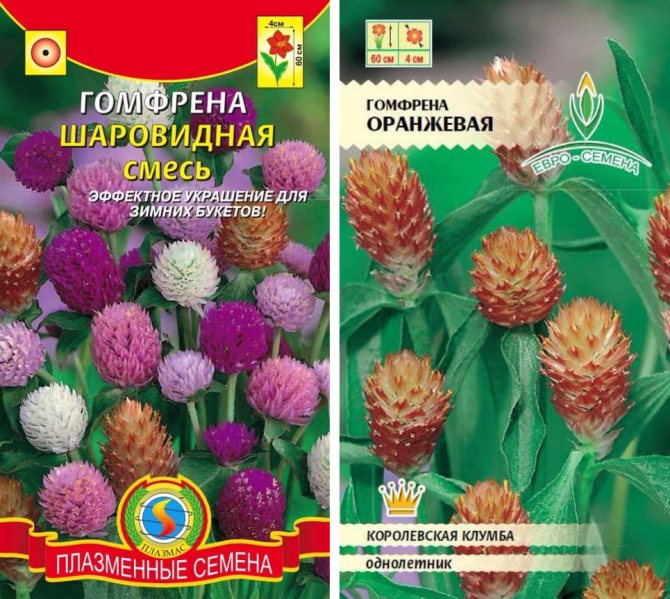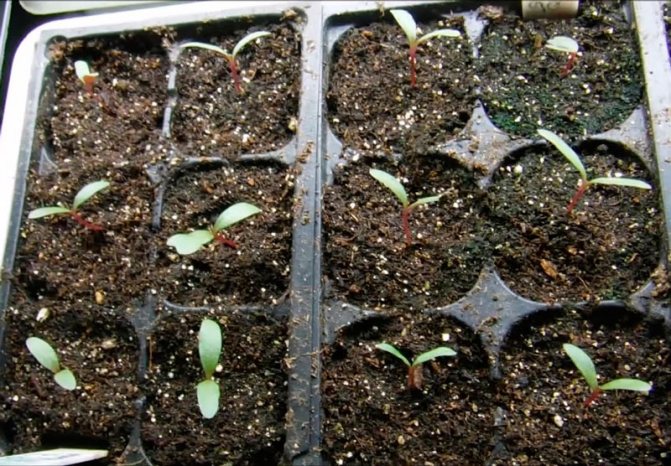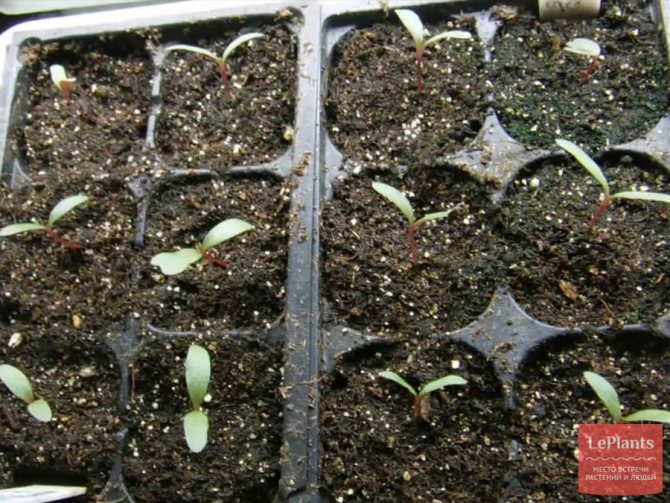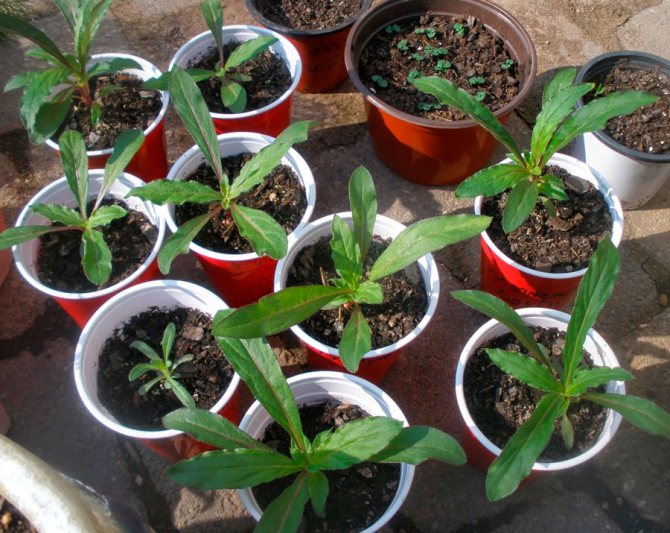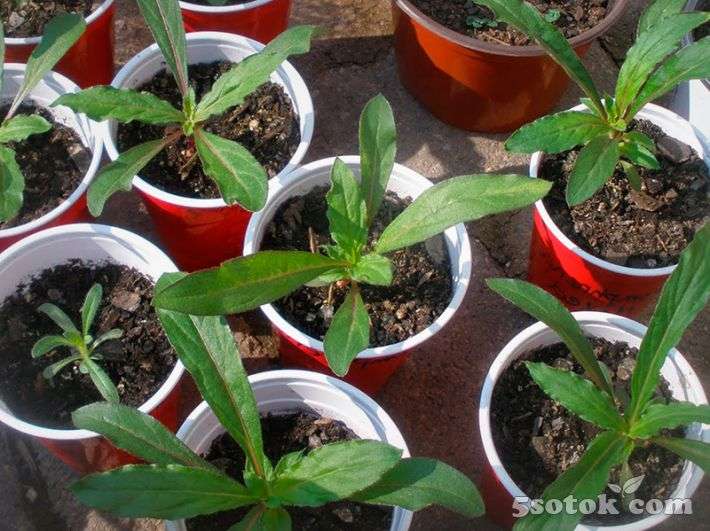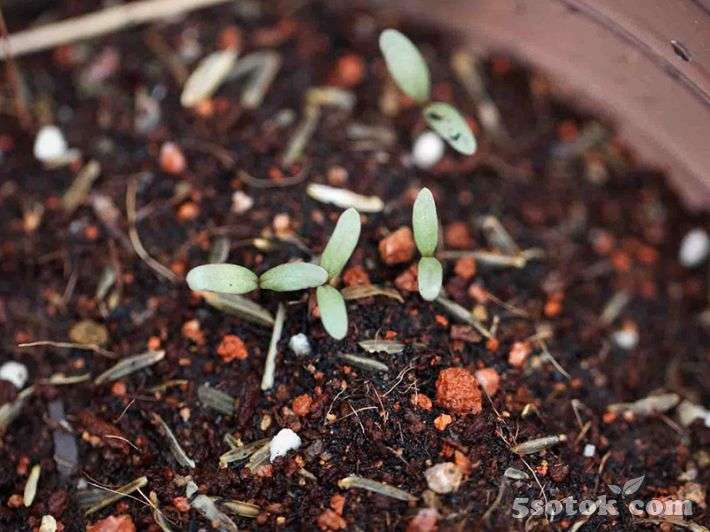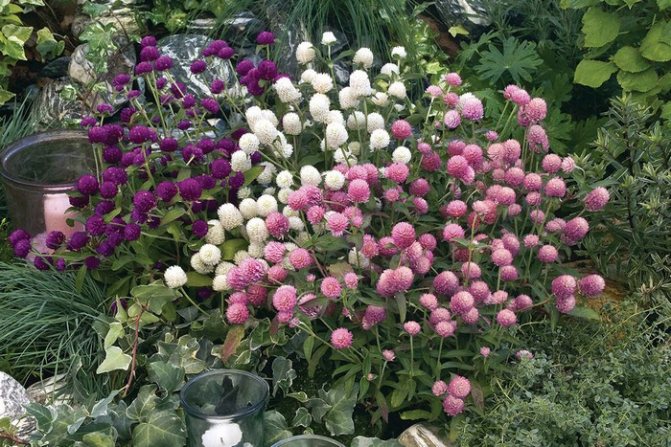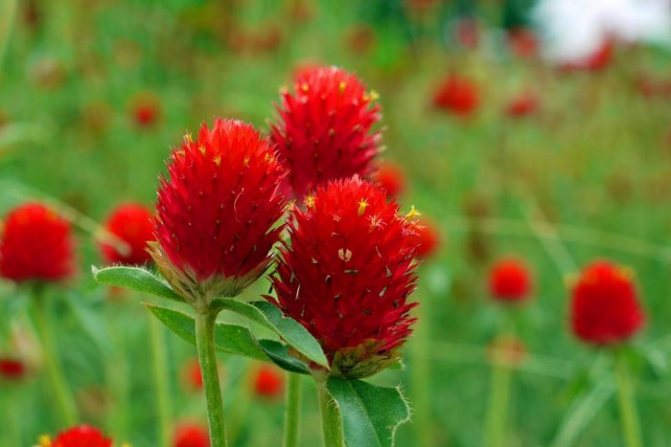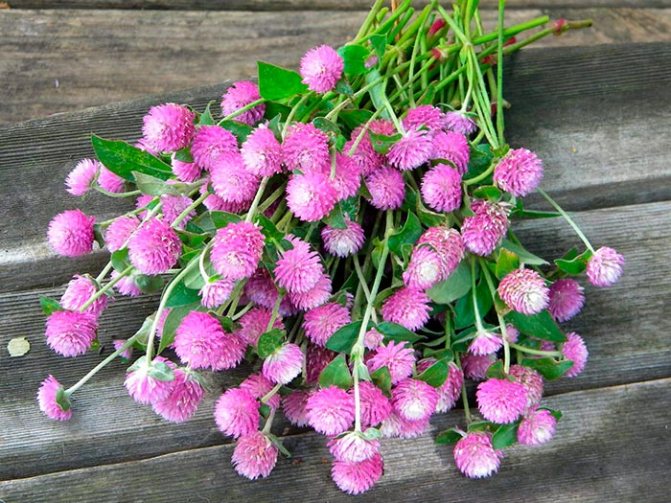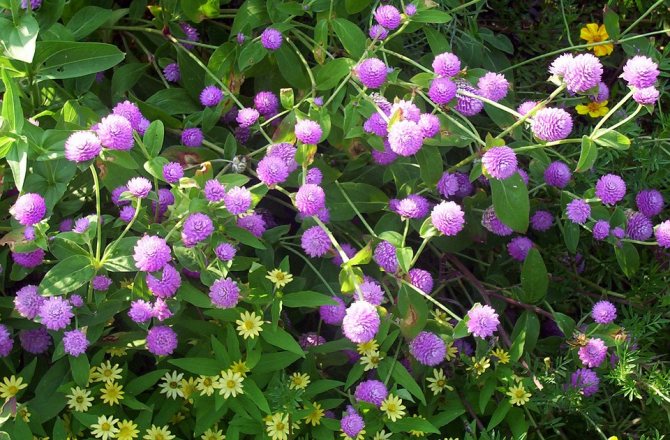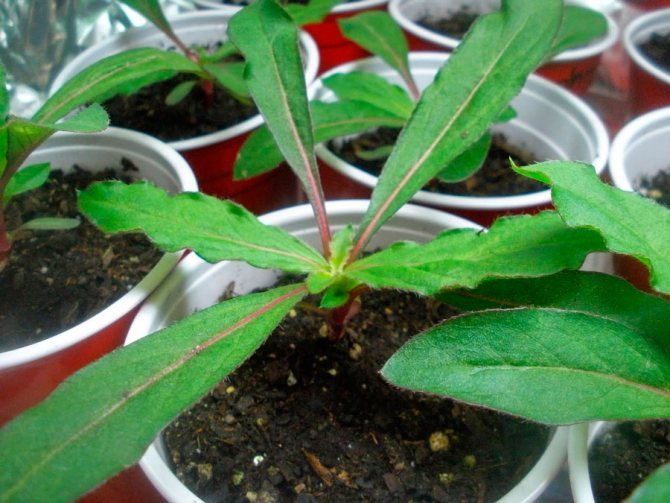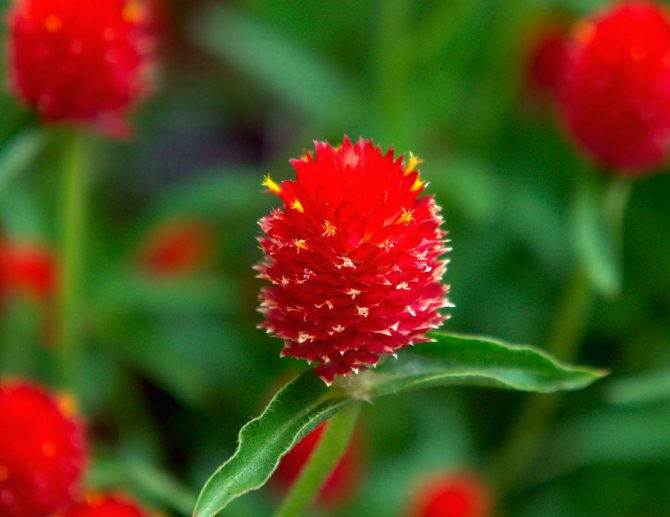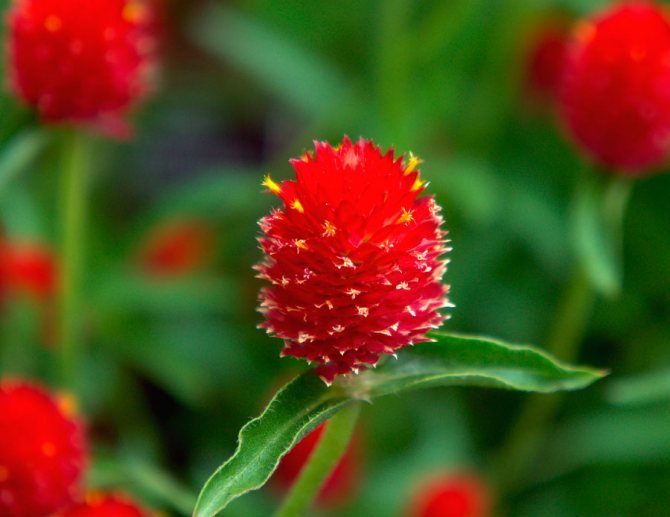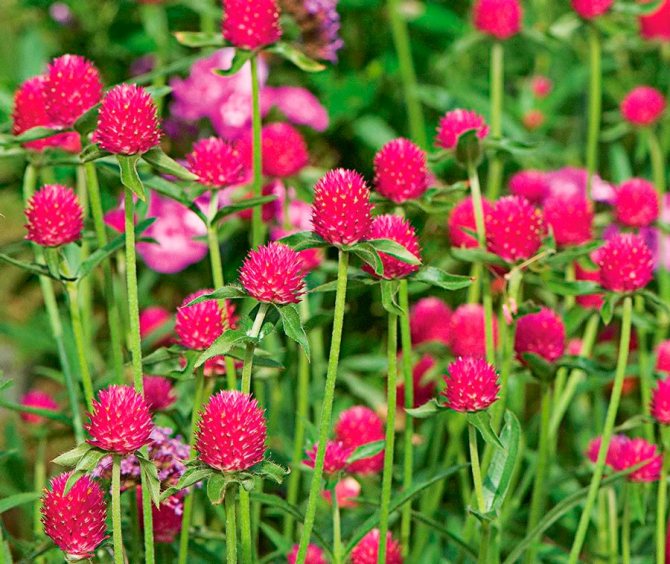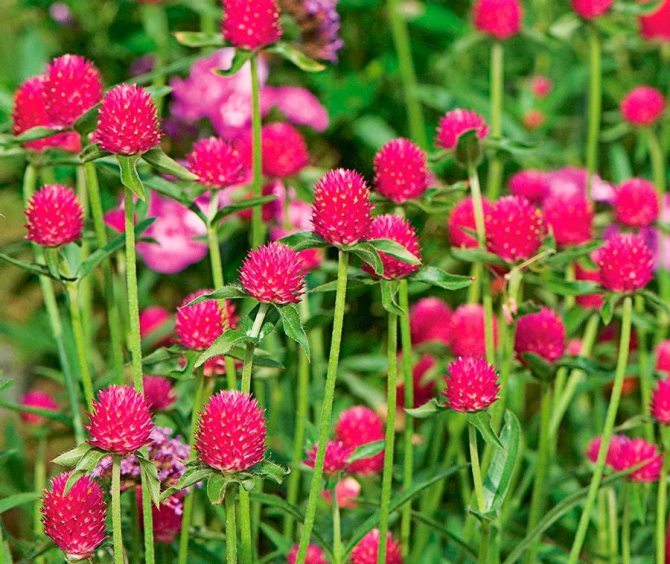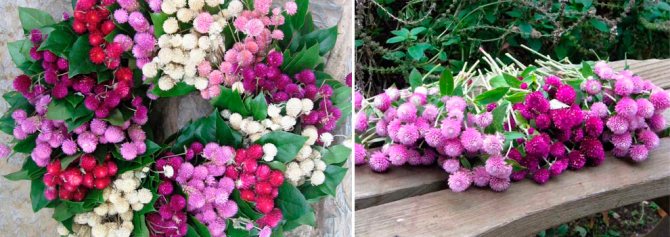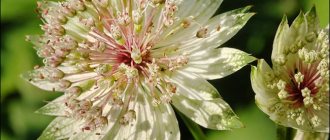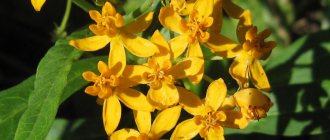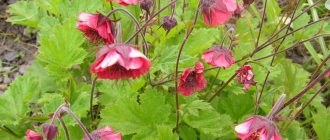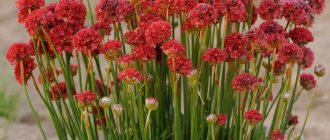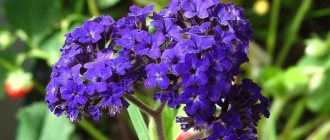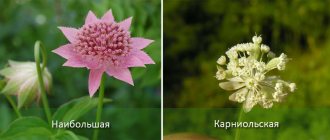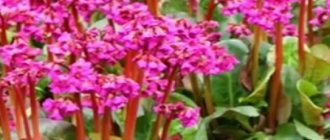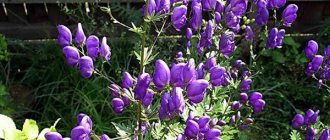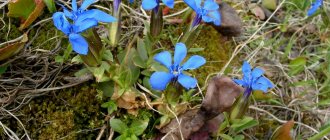Gomphrena is a typical representative of the Amaranth family. Under natural conditions, it grows in tropical forests, mainly in South and North America.
The first to describe the culture was the French botanist Delachen, who indicated that the plant owes its name to Pliny. Under this name, Karl Linnaeus entered it into the general register. The genus has united more than 100 species, some varieties are cultivated by flower growers as indoor plants, but mainly gomphrene is used as an ornamental garden flower. In Asian countries, it is used in cooking.
Gomphren's flower - description
Gomfrena is a perennial compact herb, but there are also annual varieties. Depending on the species, the stem can be either erect, rigid, or creeping, rising above the ground.

Gomfrena is a dicotyledonous herbaceous flowering plant of the Amaranth family.
The maximum plant height is up to 40 cm, but there are also dwarf border varieties with a height of 15-20 cm. Leaves are oval, 10-15 cm long, arranged in pairs, fixed on petioles or without them. You can see a whitish fluff near young foliage.
Head-shaped inflorescences have a wide palette of colors: blue, pink, white, lilac, purple, yellow, some have mixed colors. The fruit in the form of a closed achene is filled with smooth, round, flattened seeds.
Any varieties of gomphrene, including perennials, are cultivated as annuals in the harsh Russian winter. The gomphren plant is unpretentious in care, has good decorative capabilities.
Popular views with photos
There are more than 90 types and varieties of "Gomfrena Spherical". In cultural breeding, there are slightly fewer of them. The following varieties are most often found on sale.
"Gomfrena Belaya"
A perennial plant that can grow with a carpet is more suitable for growing in the garden. The stems have small opposite leaves and round white inflorescences.
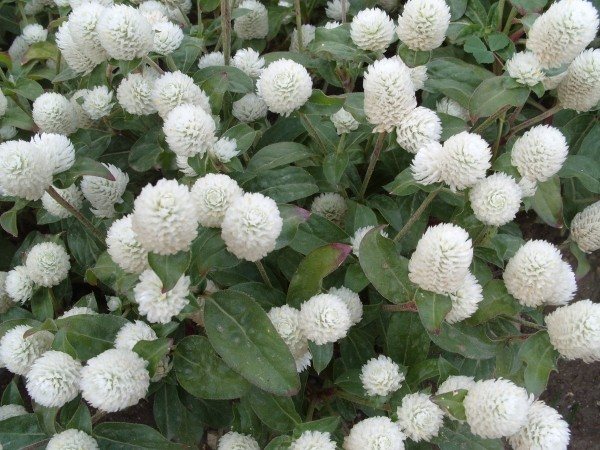

"Gomfrena Purple"
A small, well-growing bushy plant no more than 30 cm high. During flowering, the bush is densely covered with small, ball-like purple inflorescences. If it grows in a garden, the flowerbed becomes like a strawberry meadow.


"Gomfrena Light Pink"
It grows in the form of highly branching bushes up to 45 cm tall, does not differ in structure from purple gomphrene. The bracts are light pink in color. Can be used as a garden or potted form.
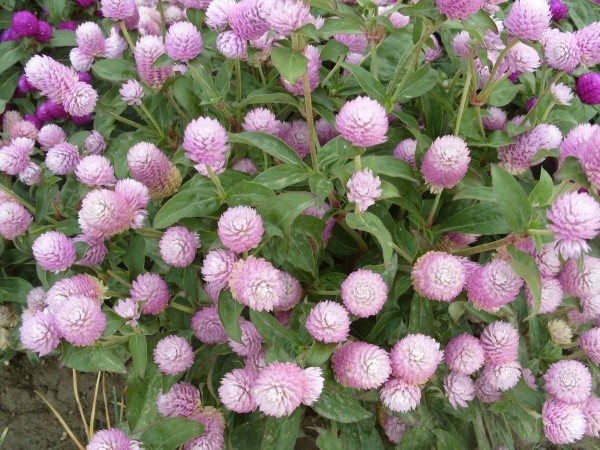

Gomfrena medicinal properties
Gomphrene is a medicinal plant: it increases immunity, saturates the body with vitamins, cleanses the liver, removes toxins and toxins. In folk medicine, gomphrenic inflorescences are used for bronchitis, cough, tuberculosis. The plant is especially useful for seriously ill, undergoing surgery and simply weakened people.
For treatment, you can use both fresh raw materials and prepared for future use. Gomfrena is drunk as tea or a special broth is prepared.
With ARVI and cough, one tablespoon of dry raw materials is enough for 200 ml of water. The broth turns out to be rich, sweetish. They drink it in small portions throughout the day.
To increase the tone and strengthen the immunity, the inflorescences are steamed together with green or black tea (the dosage is arbitrary). Drink instead of regular tea 2-3 times a day.


Gomphrene tea
Comfortable conditions for gomphrena
In order for this beauty to please with a large number of inflorescences-balls, she needs to be provided with the most brightly lit locations. Sunny, warm, open and south-facing areas are perfect for Gomfren. That is why it is recommended to plant it as spots on the lawn or on flower beds with other sun-loving summer gardens. Despite belonging to dried flowers, Gomfrena does not like the wind environment and it is better to protect it from active drafts.
It is even easier to find the soil for this beauty. Any fertile and loose soils are suitable for Gomfren.
For a potted gomphrena, they choose the sunniest places and a high-quality, universal soil mixture. The optimum soil is considered, consisting of equal parts of sod, leafy soil, sand and peat.
Gomfrena - growing from seeds
In our conditions, this plant can only be grown by seedlings. For this, annuals are used. In the soil, germination will be low, and the ripening time for this culture is long. In the prepared soil, the treated seeds are sown in early March.
The seed is also prepared in advance - pre-sowing treatment can take one and a half weeks.
Every morning for three days the seeds are soaked in warm water. It is convenient to do this in a glass container. On the fourth day, the water is drained, the seed is filtered through a strainer and washed in running water. The swollen seeds are again placed in a jar under the lid and kept for a week without water on the bottom shelf of the refrigerator.
How gomfrena reproduces
Gomphrene reproduces exclusively by seeds. Planting is carried out both through sowing seeds in open ground, and by preliminary germination of seedlings. The latter method is justified in regions where the soil warms up only by June. In this case, planting seedlings in early summer allows you to quickly get a flowering period in order to enjoy the sight of beautiful flowers.
If you plant seeds in June, then the flowers will appear in late September or October. For these reasons, in regions with a harsh cold climate, planting through seedlings is practiced, for which seeds are sown in the second half of March or early April.
For seedlings, a substrate of fertile earth mixtures is taken, which is pre-disinfected by pouring boiling water. The seeds are planted shallow and densely and then covered with foil to maintain warmth and moisture. However, it is important not to overdo it so as not to create too high a temperature. It is optimal to keep 17-20 degrees Celsius out of direct sunlight.
It is allowed to put seedlings in the sun after the first shoots have sprung up. The diving process is carried out as it grows, about 2 weeks after the first shoots appear. The plant easily tolerates a transplant, so it is grown as convenient for the gardener. Gomphrena is planted in open ground when the threat of frost has passed.
Gomfrena is an unpretentious and beautiful plant that pleases with a long flowering period and beautiful bright inflorescences. Gomfren is perfect for growing by novice gardeners who are not used to regularly looking after flowers and providing them with special conditions for development.
Planting seedlings in the ground
Plants are transplanted to the flowerbed after the spring frosts have completely stopped. The earth will already be warming up by this time. Usually this is the end of May - beginning of June.
For a flower garden, choose a well-lit area, sheltered from the wind. The optimum composition of the soil is close to neutral, with a minimum concentration of fertilizers.
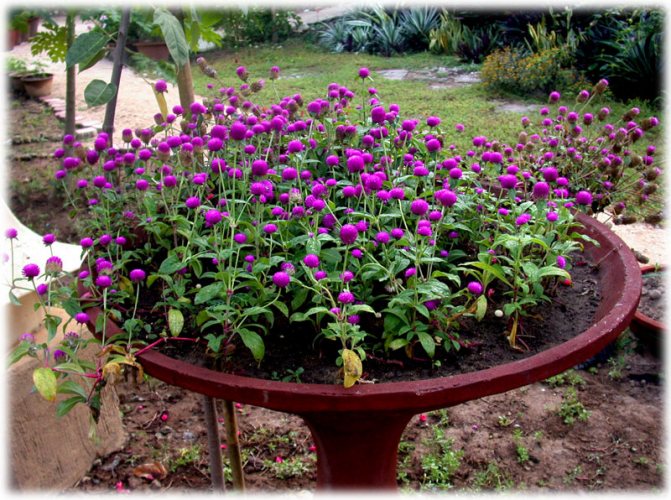

Planting Gomfren in the ground
Landing rules
Before planting seedlings, the plot is dug up, but not fertilized.After leveling the ground, make planting holes: for tall varieties, the distance should be 30-35 cm, for undersized varieties - 15-20 cm.
The depth should be optimal for handling: the seedlings, together with the earthy clod, should fit easily. When rolling over plants, place them in the center, being careful not to injure the roots.
Fill the free space with earth, the surface around the seedlings must be compacted and watered.
Type of gomphrene spherical
In the role of an ornamental plant, spherical gomphrene is often used. This subspecies is valued for its spherical inflorescences, reaching a diameter of 4 cm. The plant is a bush up to 35-40 cm high with dense green leaves, which in some species are covered with a bluish downy.
In the periods between flowering, the plant looks inconspicuous, but everything changes the appearance of flowers, which are painted in bright tones of red and purple, yellow and purple, etc. The plant blooms tirelessly from June until the first frost.
Gomphrene care in the garden
If the gomphrene has taken root, it will be easy to care for the plants. In addition to traditional watering-loosening-feeding, timely pruning will also be required. Gomphrene flowers are suitable for cutting. A pruner is not needed for this - the stem can be easily broken off at the base or in the axils between paired leaves. The more often they are updated, the thicker the bush will be and the more abundant the flowering.
The plant loves light. If there are tall flowers nearby that can shade it, you cannot count on active flowering. Most often, you can find a mixture of seeds of different varieties on sale, it is possible to arrange a bright fireworks display on the flower bed.
Plant growing conditions
Gomfrene needs as much sun as possible to bloom, so choose for landing Plants need the sunniest places in the garden. Plants are best planted on the south side. It is also necessary to take into account the fact that Gomfrena is not very fond of the wind, it is necessary to consider protection from drafts.
Any soft and loose soil can be suitable as a soil. If you grow plants in a pot, then a mixture of turf, leafy soil, peat and sand will be the best.
It is not necessary to fertilize the soil with organic matter, Gomfrena does not really like this, but mineral fertilizing can be used.
You need to feed gomfren several times, especially if you are growing a plant for cutting. The place for planting in the open field is best loosened, cleaned of weeds and stones, and watered. It is necessary to plant bushes at a distance of 20-25 cm from each other and from other flowers, since the root system of the gomphrene is quite active. After the plant is planted in the holes, it must be watered abundantly.
When to plant a plant outdoors? It is best to plant in late May - early June.
Abundant watering is not necessary for the plant as a whole, but if the weather is hot and dry, then gomphren should be watered, otherwise there will be no abundant flowering. Potted gomphrens should be watered at least once a week to keep the substrate from drying out.
Gomfrena, which grows outdoors, almost never gets sick. She needs minimal care. The only drawback will be an excess of moisture for her. In this case, cercosporosis may develop. At the first signs of this disease, the plant must be treated with a special fungicidal solution. Pests to her, like other dried flowers, are not afraid.
Gomfrena is very fond of timely weeding. Weeds not only spoil the appearance of the plant, but also take away the nutrients necessary for the normal development of the plant from the soil.
Gomphrene is a heat-loving plant, so perennials are very difficult to tolerate cold winters. The plant can be transplanted into a pot for the winter and removed to a warm room, or you can protect the root system by covering the plant with a special protective material.
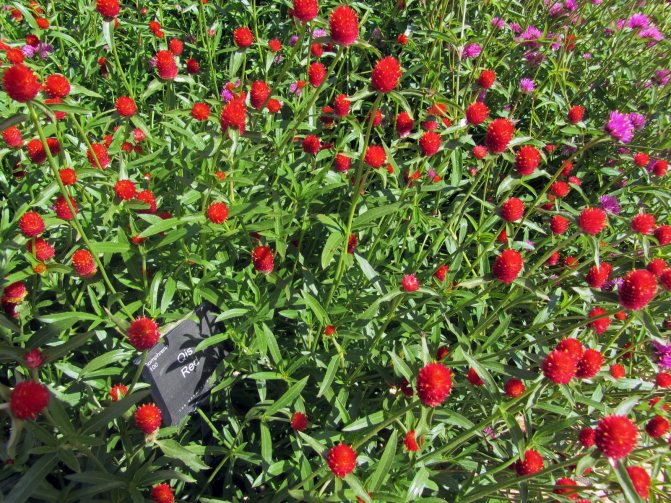

Diseases and pests of gomphren
Compared to other crops, the plant is resistant to diseases and pests, its main enemy is excess moisture, which provokes the appearance of a fungus - a black leg. The plant turns black, loses turgor.
They are saved with wood ash, loosening and protection from dampness. Sometimes aphids appear on the bushes in the form of a sticky coating, which have migrated from neighboring plants. Aphids are destroyed with insecticides, folk remedies (soap solution or wood ash) are effective only with partial damage to seedlings.
If the leaves have lost their shape, spots have appeared on them - this is cercosporia. The plant must be treated with fungicides.


Questions and answers
- Gomfrena practically does not develop and does not add in growth?
The problem is watering. Waterlogging of the soil leads to stagnation of moisture when rot begins to appear on the roots. The result is malnutrition and the development of the disease, when it is no longer possible to save the flower. Lack of development can be triggered by poor watering in dry summers. Prolonged lack of moisture against the background of hot weather leads to a suspension of development. Therefore, when watering gomfren, one should be guided by the air temperature, the state of the earthen coma.
- Why does gomfrena refuse to bloom?
Temperature or lack of light are secondary factors in this problem. Flowering usually does not occur or begins late due to overuse of feeding. This is especially true for complexes with a high nitrogen content, which stimulates the growth of green mass to the detriment of the development of buds.
- Poor similarity of gomphrene seeds?
The flower's tropical origin means that the crop should not be planted in cool weather. Even if the seeds are sown in an early cool spring, they will not sprout or the seedlings will appear so weak that they will in no way become a decoration of the garden. Speaking about our climatic conditions, it is necessary to germinate seeds first in closed ground for seedlings, and only then transplanted into open ground.
Collection and storage of seeds
Gomphrenic seeds remain viable for 2 - 3 years
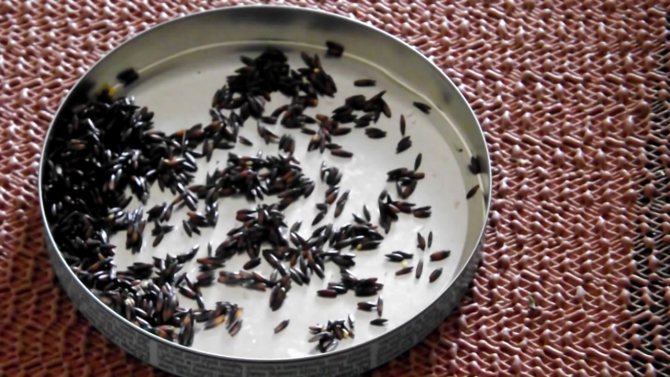

The seeds reach full maturity in September - October. They are found in the cavity of flower scales. Photo: i.
How to harvest seeds correctly:
- the collection of seeds is carried out in dry and warm weather;
- cut off only large dry inflorescences;
- spread out on paper and dry for several weeks;
- disassemble dried balls and separate the seeds;
- the seeds can not be extracted from the scales, but stored and sown so;
- store seeds in a dry place at a temperature of +20 +22 ° С.

